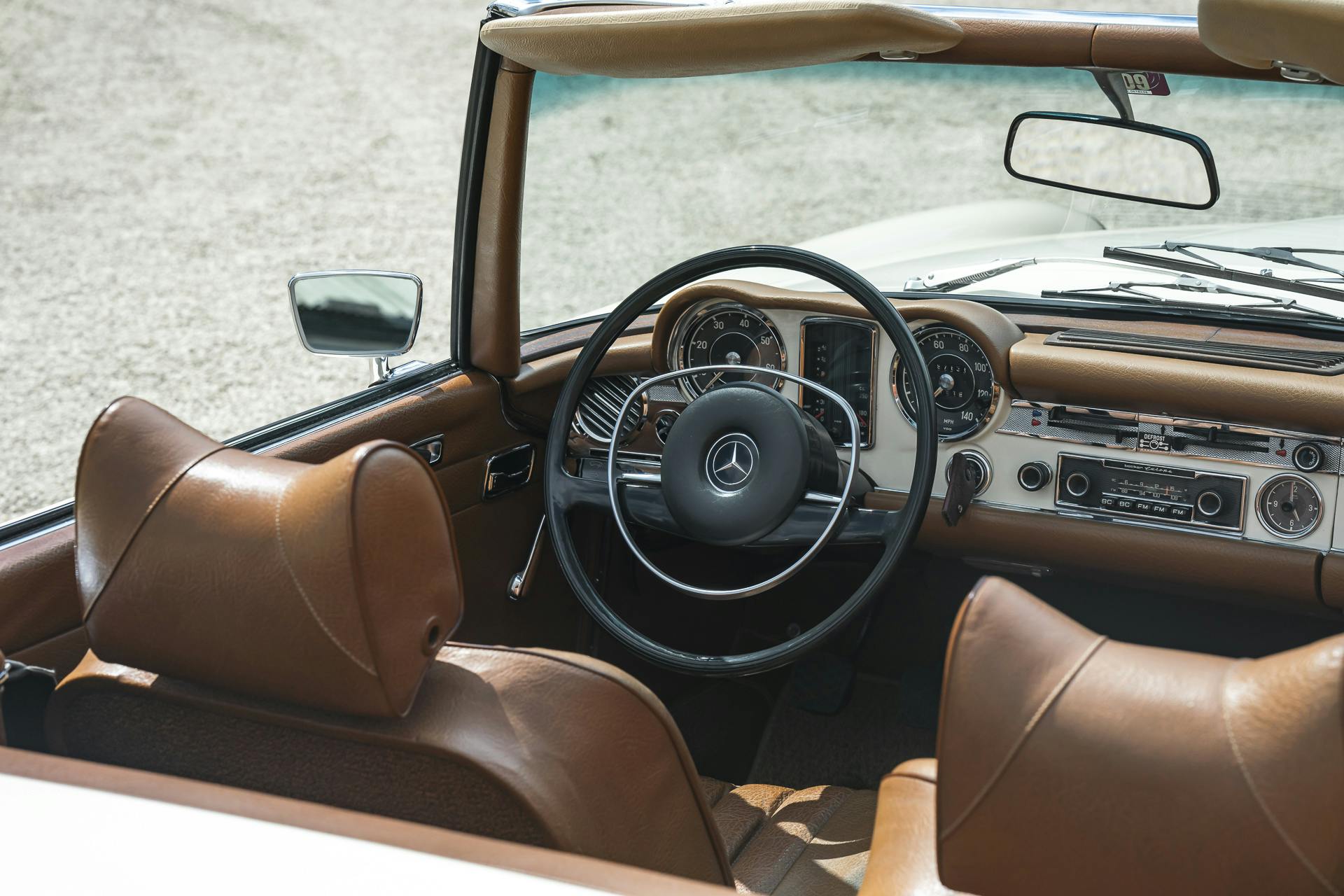1970 Mercedes-Benz 280 SL

VEHICLE DESCRIPTION
Once described by classic Mercedes expert Roger Edwards as being one of the finest 280SLs he’d ever seen, this is a beautiful example of the German marque’s supremely stylish two-seater.
Built in September 1970 and sold new to Mr. Michael L Bergman of Lyons, Colorado, it was specified with a manual gearbox and very rare limited-slip differential, plus of course its ‘Pagoda’ hard-top which accompanies the car on a purpose built stand.
Mr Bergman kept the 280SL until the late 1970s, when it passed to Larry Fitzsimons – another Colorado resident. In 1988, Fitzsimons commissioned a Denver-based Mercedes specialist, Austria Motors, to rebuild the engine and, two years later, the gearbox as well.
The car changed hands in 1992 and again in 1998, when it was bought by a collector and enthusiast who lived in Denver. He had the 280SL’s bodywork stripped to bare metal and resprayed in its original colour of Light Ivory. There is a photographic record of this work in the car’s extensive history file, and it shows how solid the bodywork had remained.
The US-market bumper overriders were removed, European-spec headlamps were fitted, and in 2000 the Mercedes was shipped across the Atlantic when the owner moved to the UK. All of the power-sapping US emissions controls were subsequently removed from the six-cylinder engine, and the car’s paperwork confirms that the car has been fastidiously maintained since then, with no expense spared.
The rear suspension rubbers were replaced at 79,000 miles, a new propshaft coupling was fitted at 81,000 miles, and at 84,000 miles it received new hoses and belts, a stainless-steel exhaust and a new brake master cylinder. New front brake discs, fuel hoses and a gearbox oil seal were installed at 91,000 miles, and in January 2024 a brand-new mohair hood was fitted at a cost of more than £4000.
Now being offered for sale, this matching-numbers Mercedes 280SL Pagoda is in exceptional condition throughout and is presented with its original handbook, Becker radio and tool kit. It even still has the original stickers on the boot lid for oil level and tyre pressures, and represents a peerless blend of elegant styling and engineering excellence.
MODEL HISTORY
As a replacement for the famous W198 300SL and the 190SL, the Mercedes-Benz W113 had big shoes to fill when it was launched in 1963. Based on the platform from the W111 saloon, it was styled by a team that included Paul Bracq and Béla Barényi, who was responsible for the concave hardtop that gave the model its ‘Pagoda’ nickname.
The new SL was powered by a range of fuel-injected six-cylinder engines, having been introduced as the 2308cc 230SL. The short-lived 2496cc 250SL was produced from late 1966 to early 1968 and gained all-round disc brakes, while the final evolution was the 2778cc 280SL, which was introduced in late 1967.
There was a choice between a four-speed automatic gearbox or a four- or five-speed manual, and air-conditioning was usually specified for cars sold in North America. More than half of 280SL production was exported there.
Steering was via a recirculating-ball set-up, while the suspension combined double wishbones at the front and a low-pivot swing axle at the rear.
The W113 was intended to be more of a safe, comfortable Grand Tourer than a sports car, and when Road & Track tested a 280SL in 1968, it said that ‘in matters of handling, brakes and ride, the SL is still one of the outstanding cars of the day’. The magazine concluded that ‘it is a well-proven, reliable car and the quality of its execution is a delight to the connoisseur of fine automotive machinery’.
The 280SL lasted until 1971, when it was replaced by the new R107 model, but the W113 remains a high point in the long history of the Mercedes SL and a coveted style icon.